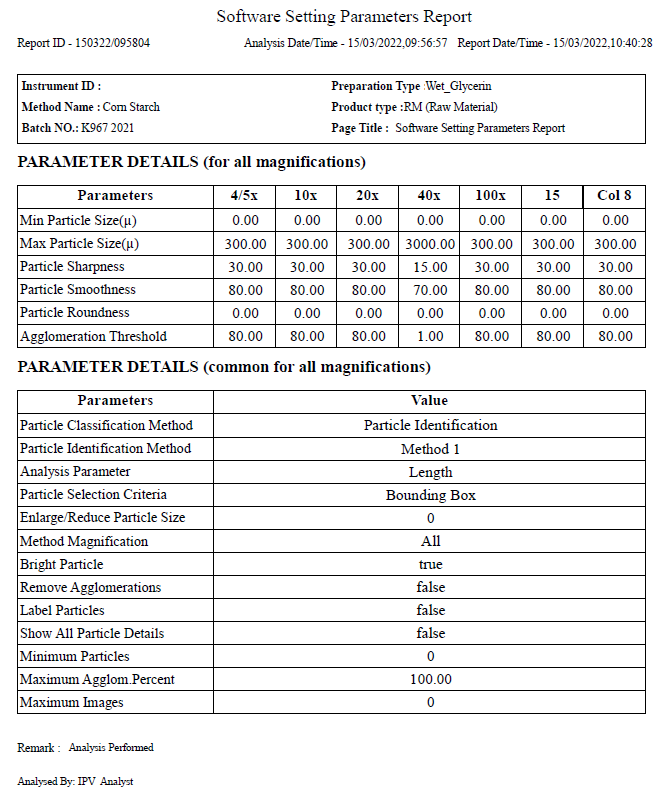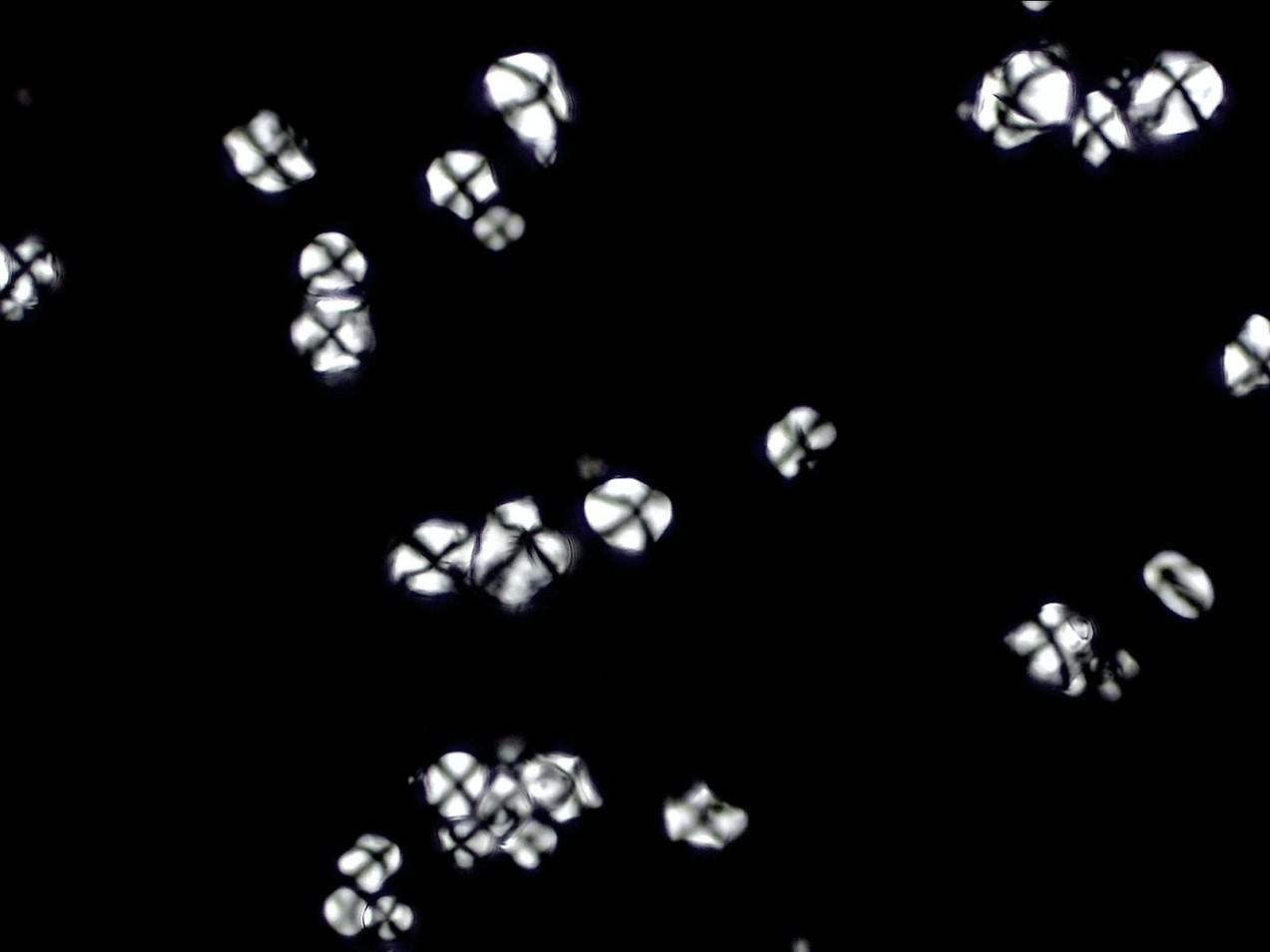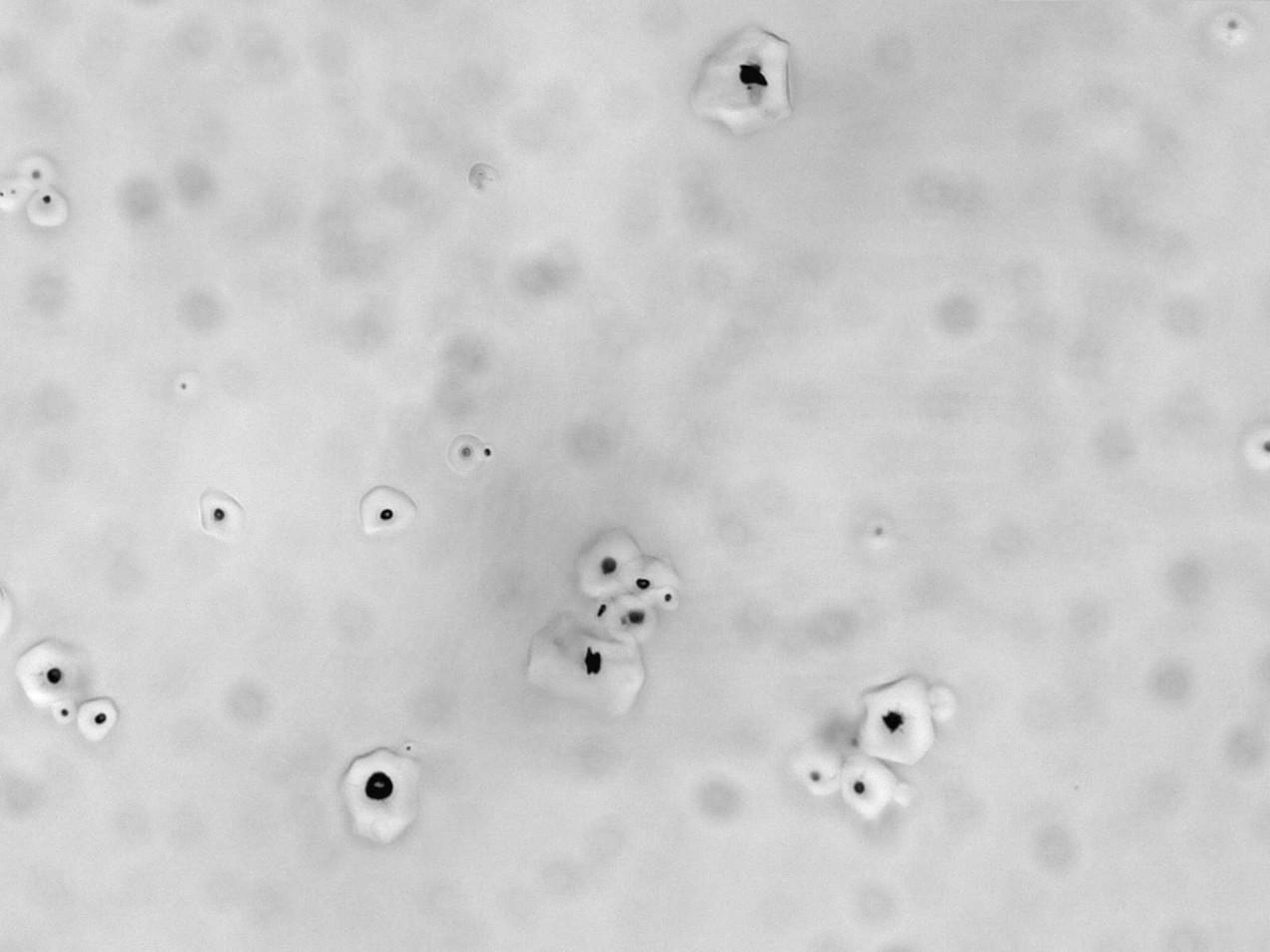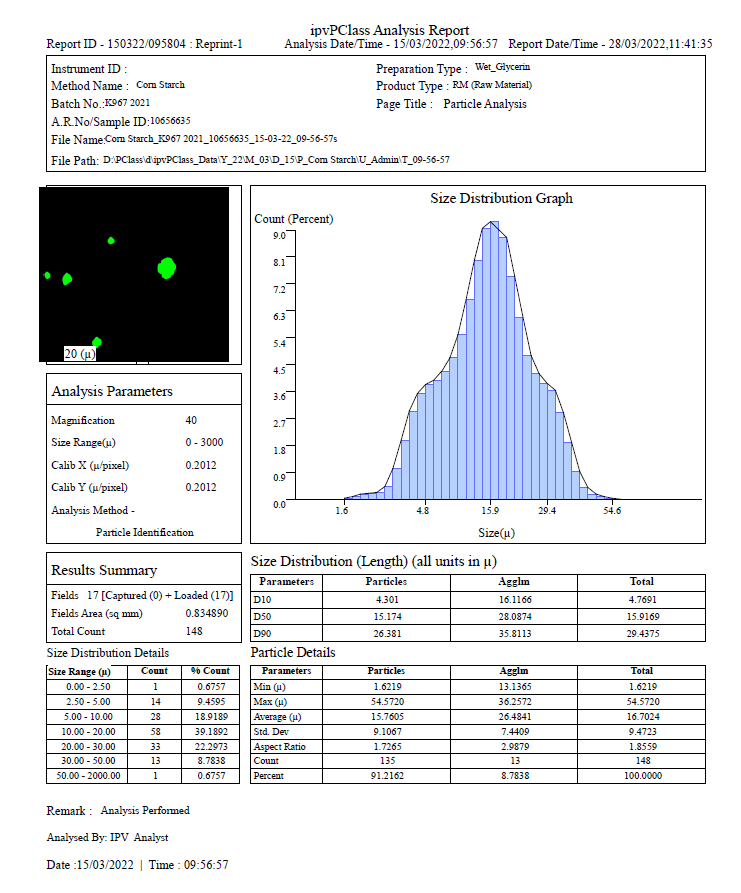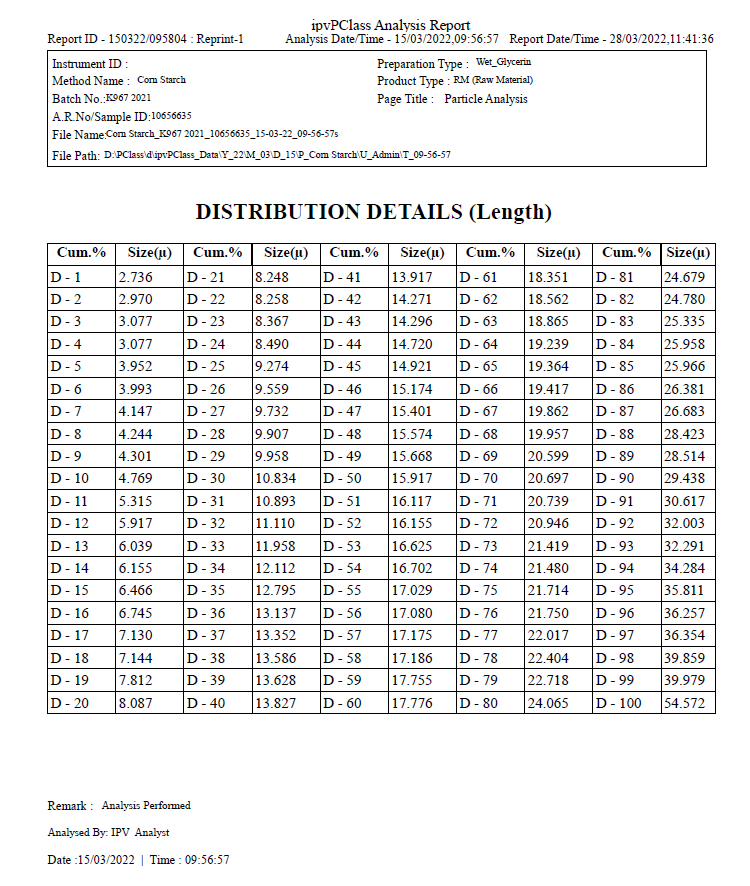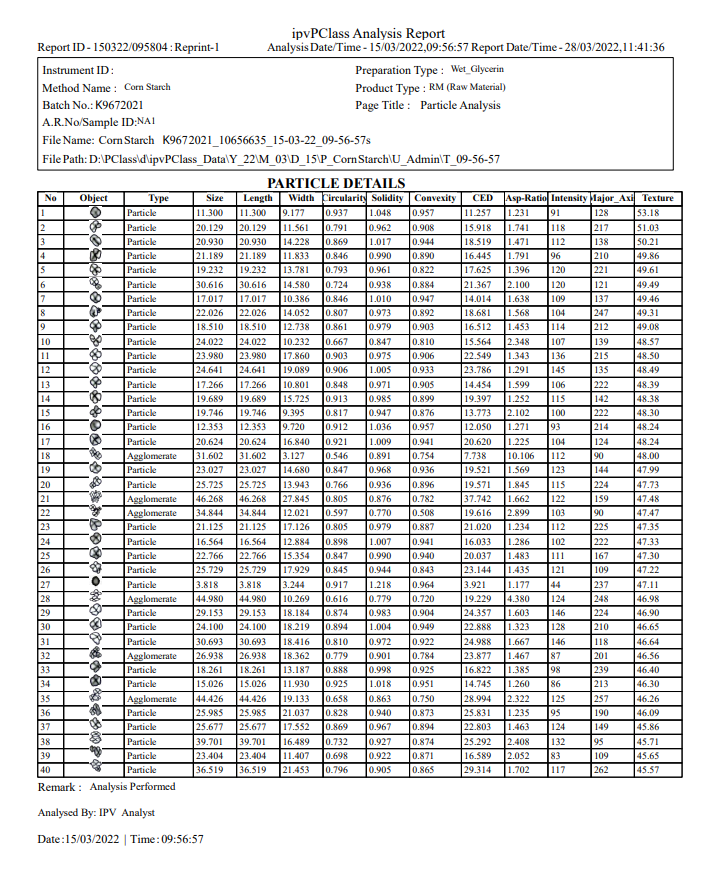Corn starch granules are suspended in glycerin and analysed under polarized light using 40X magnification. The granules are polygonal in shape and the average size of the particles is 16μ. The hilum (core of the grain) of all polygonal starch granules is centric and distinct intersecting lines (cross shaped) can be identified under polarized light. All the particle analysis and characterization is done using ipvPClass software, exhibiting all the particle details in the report.
Precision imaging across diverse applications
See our Applications- API Particle Characterisation
- Capsule Seam Analysis
- Deformulation Analysis
- Excipient Particle Characterization
- Foreign Matter Inspection (Vial Inspection - Intrinsic & Extrinsic)
- Globule Size Determination in semi-solid dosage forms
- Hot Stage Microscopy
- Microbiology Colony Counting and Gram Staining
- Particulate Matter Count - Filter Paper Analysis


